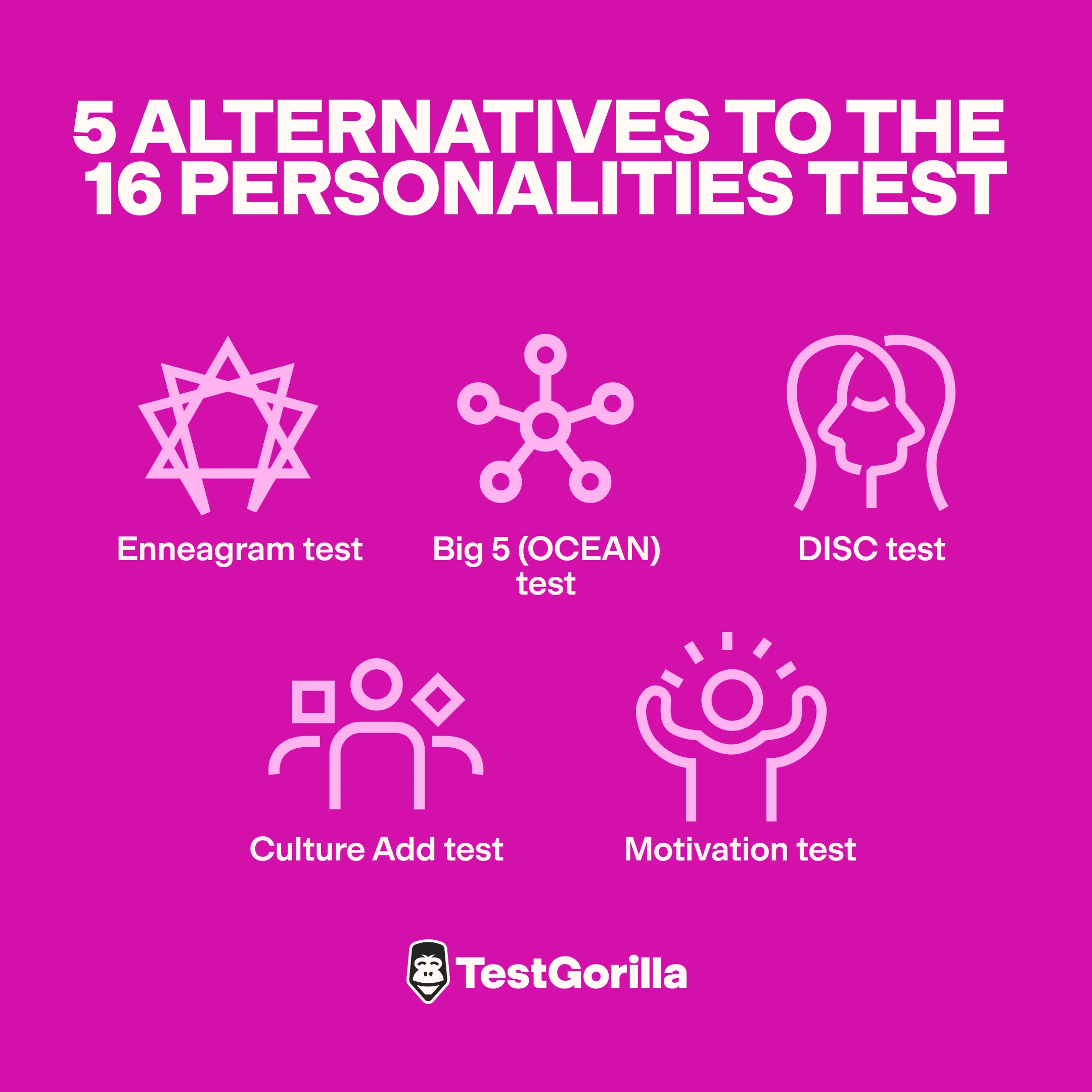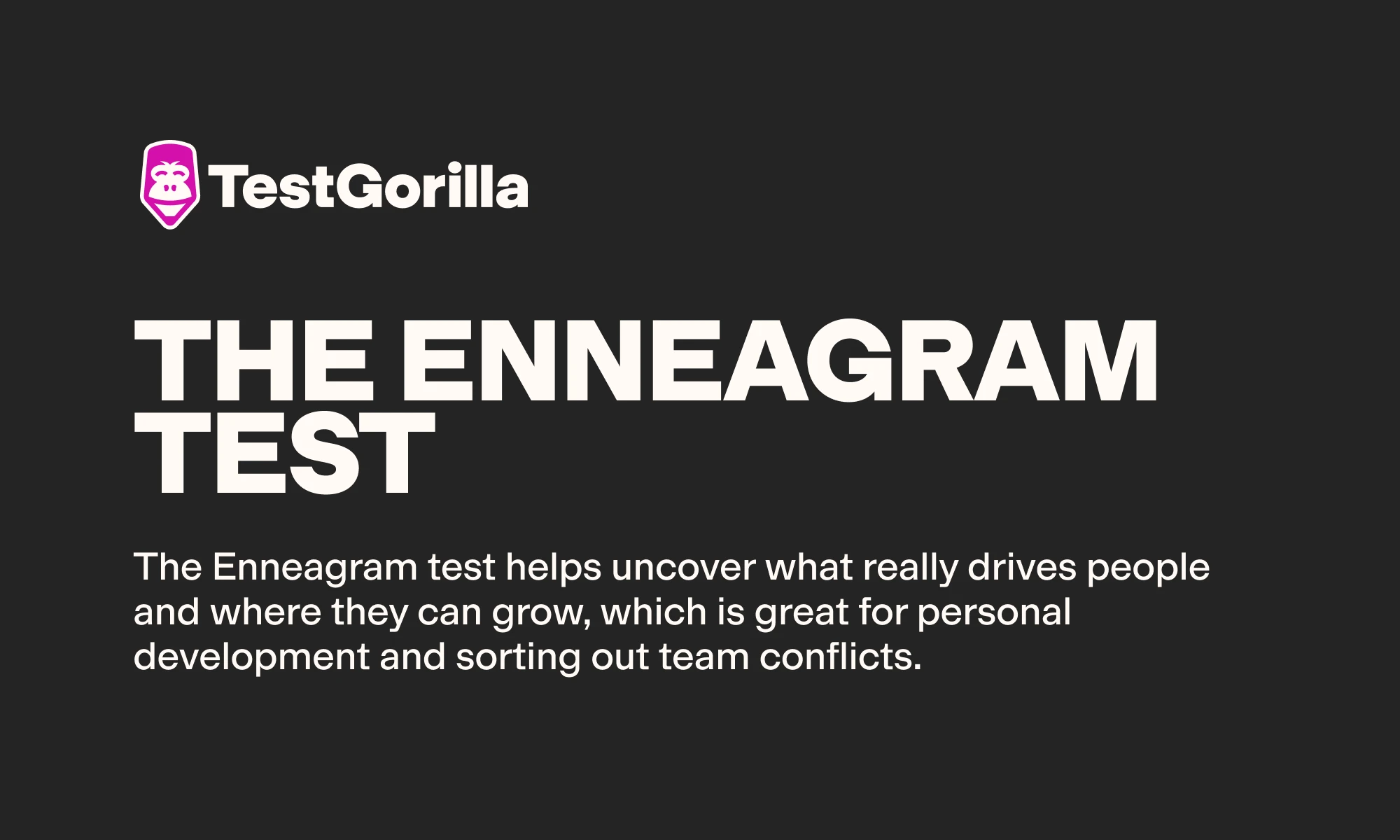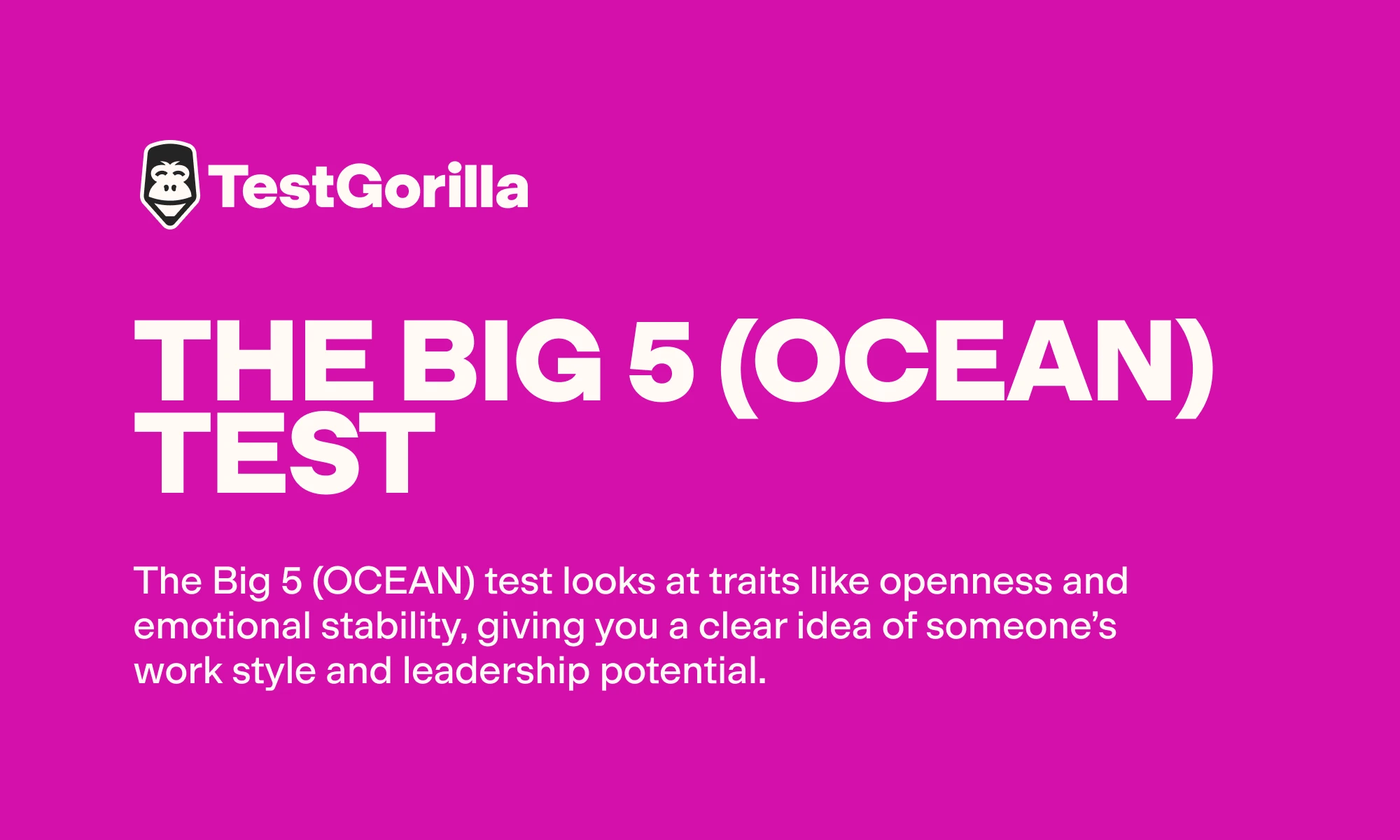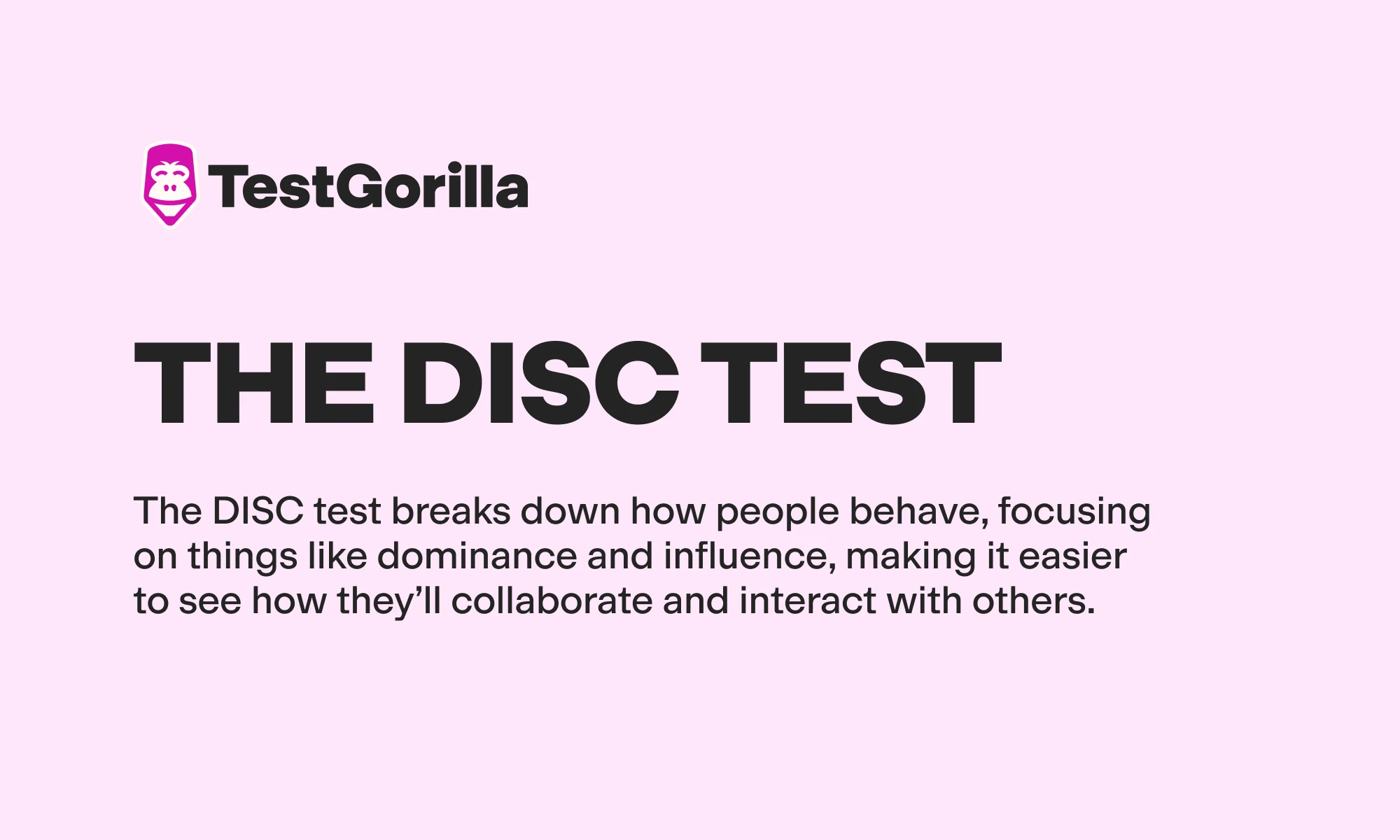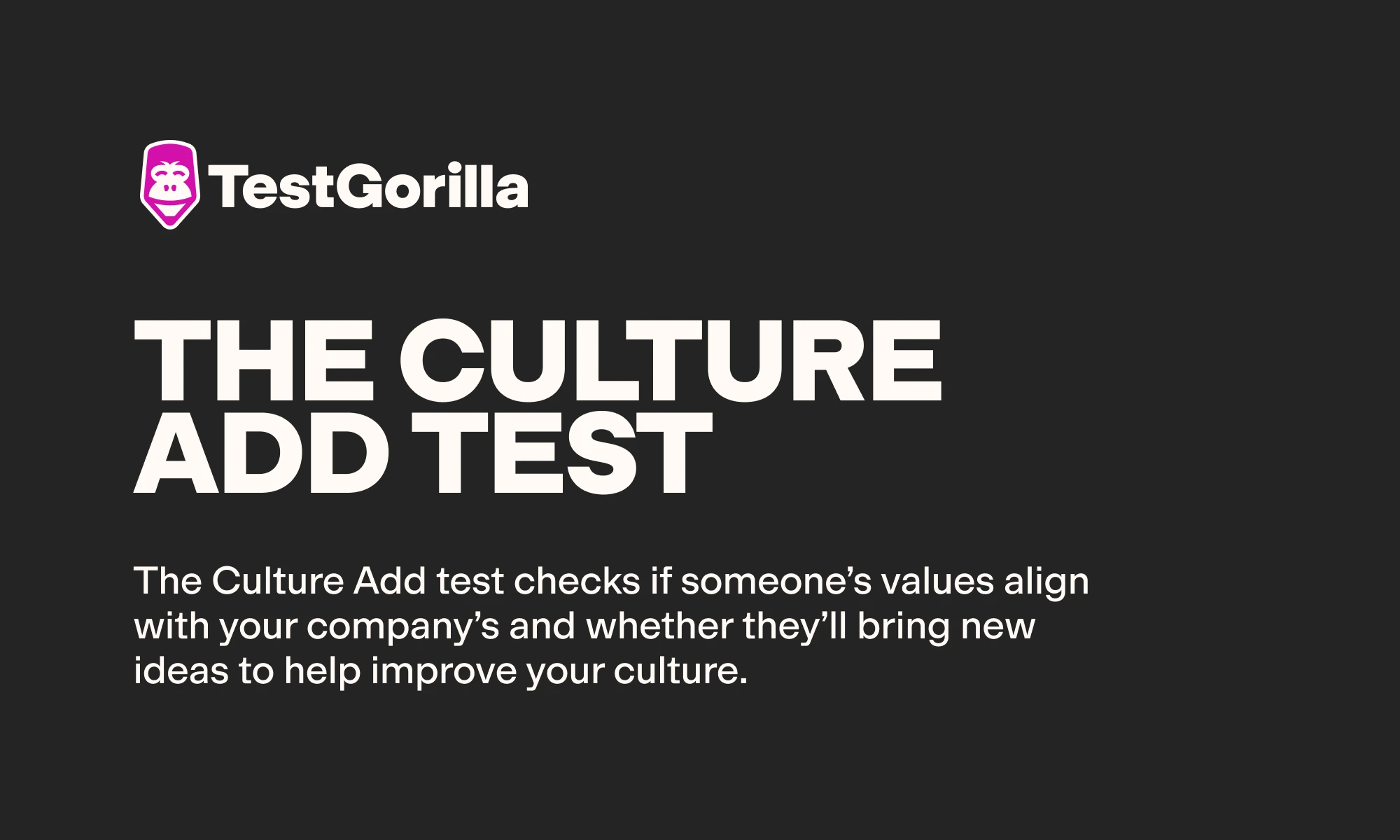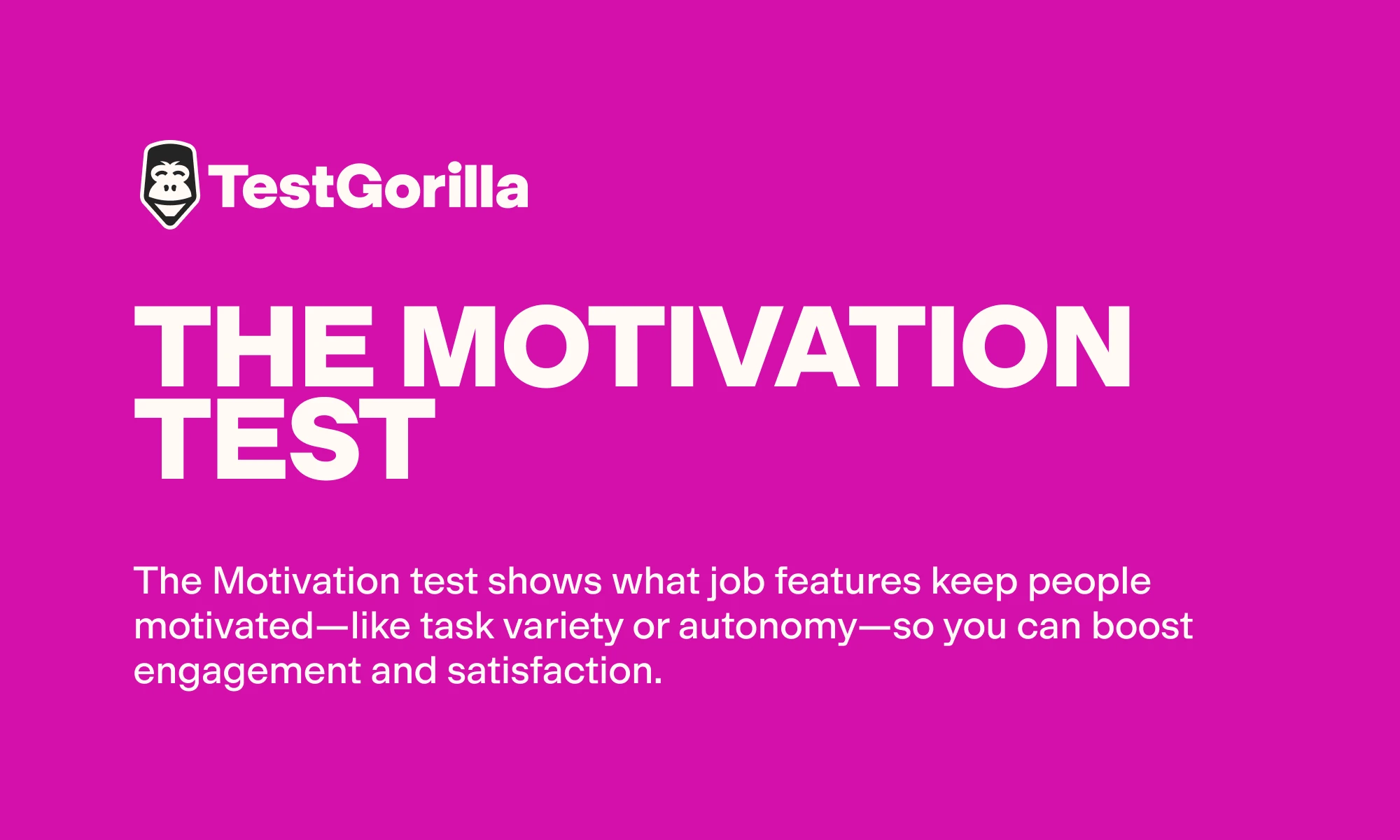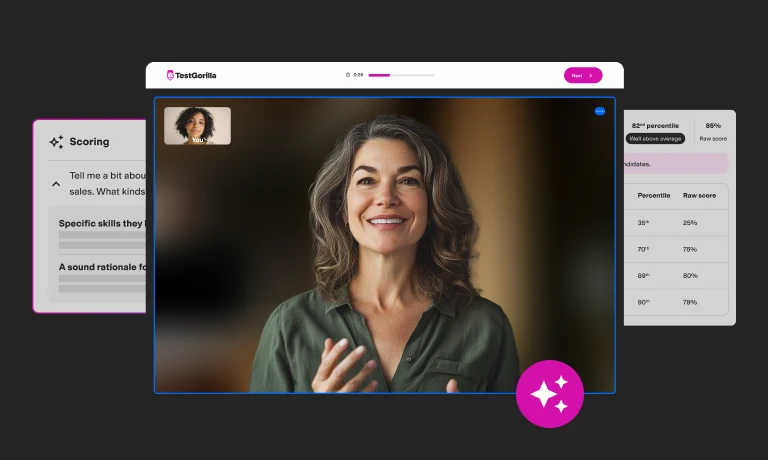Top 5 alternatives to the 16 Personalities test: Best personality tests for work
Personality testing is great for understanding how people work, communicate, and fit into a team. The 16 Personalities test is a popular choice for this, but it might not capture everything you need to know for workplace success.
To give you deeper insights into your candidates (and current employees), this guide explores five alternatives to the 16 Personalities test. These offer fresh perspectives on behavior, values, and job satisfaction, and we’ll show you how each fits different work scenarios.
Let’s get started!
Key takeaways
The Enneagram test helps uncover what really drives people and where they can grow, which is great for personal development and sorting out team conflicts.
The Big 5 (OCEAN) test looks at traits like openness and emotional stability, giving you a clear idea of someone’s work style and leadership potential.
The DISC test breaks down how people behave, focusing on things like dominance and influence, making it easier to see how they’ll collaborate and interact with others.
The Culture Add test checks if someone’s values align with your company’s and whether they’ll bring new ideas to help improve your culture.
The Motivation test shows what job features keep people motivated—like task variety or autonomy—so you can boost engagement and satisfaction.
About the 16 Personalities test
The 16 Personalities test is a widely-used tool that categorizes people into one of 16 types based on how they think, make decisions, and interact with others – both personally and professionally. It offers insights into communication style, teamwork, and leadership potential.
However, while it’s easy to take and understand, the 16 Personalities test might not dig deep enough into someone’s true motivations or behavior patterns. Other personality tests can offer more targeted insights, especially into specific behaviors or traits.
The best insights on HR and recruitment, delivered to your inbox.
Biweekly updates. No spam. Unsubscribe any time.
1. Enneagram
How it works
The Enneagram test asks people to rate how much certain statements fit them. It takes about 30-40 minutes and highlights nine personality types based on fears, motivations, and growth areas:
What it tests for
Aside from identifying personality types, the Enneagram helps you understand how people react emotionally in different situations. This makes it useful for guiding employees’ personal development and improving workplace relationships.
When to use it
The Enneagram is ideal for roles that need emotional intelligence and people skills, like leadership, HR, counseling, and mentoring. It’s especially helpful in improving teamwork and personal growth.
⭐Want to learn more about TestGorilla’s Enneagram test and add it to a hiring assessment? Check out our Enneagram Personality test page. We also have a guide that explains how to interpret Enneagram test results!
2. Big 5 (OCEAN)
How it works
The Big 5 (OCEAN) test is a 10-minute self-assessment where candidates rate how accurately statements describe them on a scale of 1 to 5.
What it tests for
This test measures personality across five main traits:
Openness: How curious and open someone is to new ideas and experiences.
Conscientiousness: How organized and responsible one is.
Extraversion: How outgoing and social someone is.
Agreeableness: How kind, friendly, and cooperative someone is.
Neuroticism: How often one feels anxious or easily stressed.
Through this, the Big 5 (OCEAN) test shows how employees behave, especially under pressure.
Because it measures personality traits on a flexible scale, unlike the fixed categories used in the 16 Personalities test, this test also gives a more detailed look at personality – making it better for predicting workplace behavior and teamwork.
When to use it
This test is excellent for assessing candidates for research, education, and healthcare roles, where understanding personality can improve collaboration, problem-solving, and patient or student interaction.
It’s also ideal for jobs requiring adaptability, emotional intelligence, and strong interpersonal skills.
⭐Explore our Big 5 (OCEAN) Personality test page to learn more about this test. Then, check out our guide on analyzing Big 5 test results.
3. DISC
How it works
Test-takers rate 24-48 statements from 1 to 5 based on accuracy (1 is very inaccurate, while 5 is very accurate). It takes roughly 15 minutes to complete and focuses on these five core personality traits:
Dominance: Focuses on competition, assertiveness, and achieving results.
Influence: Emphasizes optimism, sociability, and persuasiveness.
Steadiness: Highlights supportiveness and calmness.
Conscientiousness: Centers on logical thinking and attention to detail.
After the test, individuals are categorized as one of the four main traits (D, I, S, or C) or a combo of the two (such as SC or DI).
What it tests for
DISC offers insight into how individuals handle tasks, work in teams, and communicate. Research shows that the DISC assessment helps teams collaborate better and reduces conflict by making it easy to understand how people behave. Plus, the test allows you to assign tasks and even roles based on behavior, not just thought processes.
When to use it
Use DISC for roles requiring strong communication, teamwork, and task management. It’s especially helpful for sales, project management, customer service, and any team-based role where behavior plays a key role in success.
⭐ Head to TestGorilla’s DISC Personality test page to discover more and add it to your talent assessments. You can also find our guide on interpreting DISC results on our blog.
4. Culture Add
How it works
Employees respond to workplace scenarios or statements, rating how much they agree or disagree. These scenarios focus on their behaviors, values, and attitudes at work. The test takes about 15-20 minutes to complete.
What it tests for
The Culture Add test looks at how a person’s values and behaviors align with and can improve a company’s culture, helping you identify employees who can actively contribute to teamwork and push creative growth.
Research also shows that focusing on cultural addition, rather than just fit, boosts diversity and improves team performance.
When to use it
Use this test when hiring for roles where you're looking to enhance company culture, diversity, and innovation. It's perfect for identifying employees who bring fresh perspectives and align with company values – making it useful for creative teams, leadership positions, and any role where cultural contribution is important.
⭐ For more information, check out our Culture Add test page and our article on why culture add is the new way forward.
5. Motivation
How it works
Individuals complete a survey with questions or scenarios about their preferences in a job and the types of tasks they enjoy. They rate how much they agree or disagree with these statements.
The test takes about 15 minutes to complete and evaluates motivation through five key job characteristics: task identity, task significance, skill variety, feedback, and autonomy.
What it tests for
The Motivation test, based on Hackman & Oldham’s Job Characteristics model, focuses on how job design influences motivation and satisfaction. It examines factors tied directly to the work environment and role, giving insight into what drives employees day-to-day. This makes it more useful for understanding motivation in specific job roles compared to the 16 Personalities test, which looks more at cognitive preferences.
When to use it
This test is ideal for roles in sales, marketing, education, healthcare, and technical fields, where motivation directly impacts performance. It’s also great for any position where understanding what drives employees can lead to better engagement and long-term productivity.
⭐ To learn more about TestGorilla’s Motivation test and add it to assessments, head to our Motivation test page. You can also learn more about measuring job motivation on our blog.
Build stronger teams with TestGorilla
The 16 Personalities test might give you some insight into individuals’ personalities, but when you need a deeper understanding of their work habits, motivations, and how they’ll fit into your team, alternatives are the way to go. Tests like the Big 5, DISC, and Culture Add help you see how your employees will collaborate, lead, and align with your company’s values.
To get the full picture, though, combine personality assessments with skills-based tests. TestGorilla is the perfect solution for this. With more than 350+ tests in our library, we help you dig deeper and make unbiased, data-driven hiring decisions.
Want to improve team performance and hire with confidence? Sign up for your free plan or schedule a free live demo today!
FAQs
What is the rarest 16 personality type?
INFJ – often called the Advocate, Counselor, or Idealist, is the rarest personality type – making up only about 1.5% of the US population. The letters INFJ stand for introversion, intuition, feeling, and judging.
What is the opposite of judging in 16 Personalities?
The opposite of Judging in the 16 Personalities framework is Perceiving. While people with a Judging preference like structure, organization, and planning, those with a Perceiving preference tend to be more flexible, spontaneous, and open to new information. Perceivers prefer to keep their options open rather than sticking to a strict plan, making them adaptable and comfortable with change.
You've scrolled this far
Why not try TestGorilla for free, and see what happens when you put skills first.


